Everybody has a reason to travel around Europe. Some people like to see the traditional sights of every city, other people want to taste food and others want to feel like a local. Personally, I just realized that my style of traveling could be described as architectural travel.
Whenever I choose a new city to visit, one of the first things I do is look for some unusual construction. Something like a unique-looking building. And my goal is always to go there and take too many pictures of it.
Since childhood, I have been fascinated by buildings and how fantastic they look. As a child, one of my dream jobs was to become an architect. But, when the time was right to enter university, I went in a different direction and left architecture in the back of my mind for a while.
This is why I decided to start this Architectural Travel list. Here, I will include some of my favourite buildings and places to visit around Europe.
From Kaliningrad to Dusseldorf, from Berlin to the outskirts of Paris; my goal here is to show you that there is something amazing to see in each corner of Europe, and you need to go there to see it on your own.
Our List of Architectural Travel around Europe
The Turning Torso in Malmö
The Turning Torso opened to the public in 2005 as the tallest building in Nordic countries. Still, its height differs from what most people think when remembering the structure. Its twisting design is the main feature, and it lends enough inspiration to architects all around the globe.
Looking up, you can see that the tower is made of nine cubed-shaped pieces staked on each other as they twist. Each of these cubes is five floors tall, and each floor is rotated by 1.6º degrees from the one below. With this rotation, going from the bottom to the top, the twist amounts to 90º, which gives the impression that the Turning Torso is rotating on its axis.

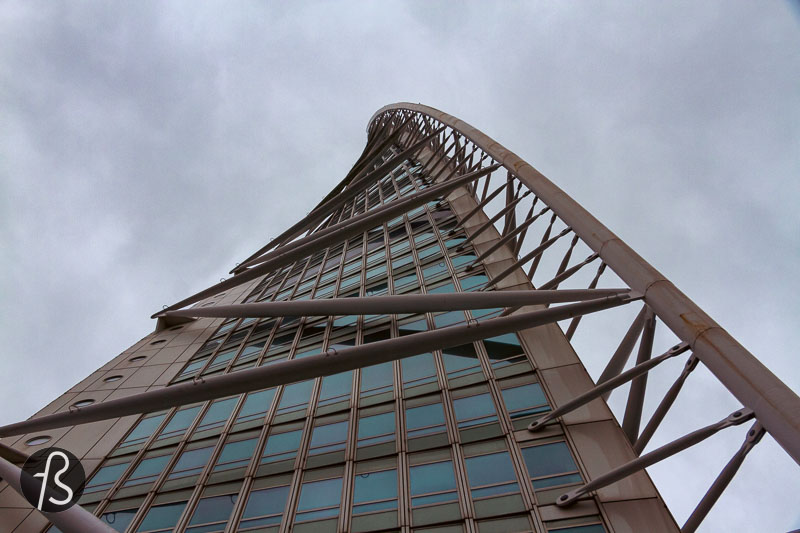
Igreja do Sagrado Coração de Jesus: A Brutalist Church in Lisbon
Igreja do Sagrado Coração de Jesus is an experimental-looking brutalist church that was designed by architects Nuno Portas and Nuno Teotónio Pereira. They lead a movement in Portugal to free contemporary religious architecture from historical stigmas.
Their goal was to renew religious architecture. Igreja do Sagrado Coração de Jesus, known in English as the Church of the Sacred Heart of Jesus, is easily one of the best examples of this effort. This beautiful-looking church was built in the 1960s and is categorized as a national monument today.

The Western City Gate in Belgrade
The Western City Gate, also known as Genex Tower, is a massive skyscraper in Belgrade that can be spotted over the horizon from everywhere you go in the Serbian capital. The 35 floors tall building is an icon of architectural brutalism with its two connected towers. One of them lay abandoned entirely.
The building got the nickname Genex Tower since one of the towers was occupied but the Genex Group for years. Nowadays, you can walk up to the reception area and see that something used to exist there. But there is no way to enter the building. We checked. The smaller tower is a residential building with some shops on the ground floor. We saw few people passing by at the same time that we took pictures at the end of the afternoon.
In March 2020, in our last trip, before the COVID-19 pandemic hit, we took our cameras to Belgrade, and the Western City Gate was one of the main places we wanted to visit while in town. If you want to learn more about this place, click on the link below.
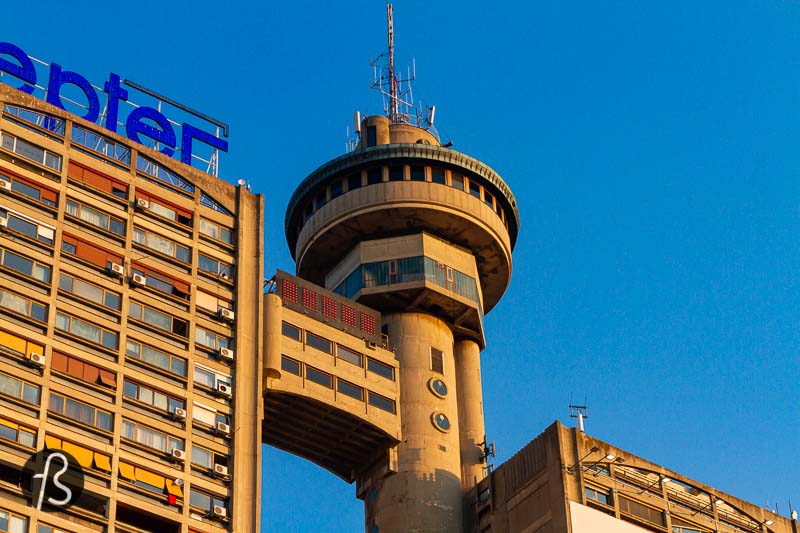
The Szczecin Philharmonic in Western Poland
I didn’t know much about Szczecin until I read something about how the Szczecin Philharmonic won an architectural design award back in 2014. This is how I knew I had to explore this city not that far away from Berlin.
The Szczecin Philharmonic was founded in 1948, and it’s called Filharmonia im. Mieczysława Karłowicza w Szczecinie in Polish. Also known as the Mieczysław Karłowicz Philharmonic Orchestra, it was open to the public on October 1948. Not long after the city moved from Germany to Poland territory. But this is the old building. The new Szczecin Philharmonic building opened in September 2014 and it’s easily the most beautiful building in town.
Designed by Studio Barozzi Veiga from Spain, this music venue covers an area of 13.000 square meters and comes with a concert hall that fits a thousand people and a smaller one for 200 people. From outside, the building shows its characteristic ice castle shape and its translucent glass façade that looks fantastic and made me take too many pictures of it.
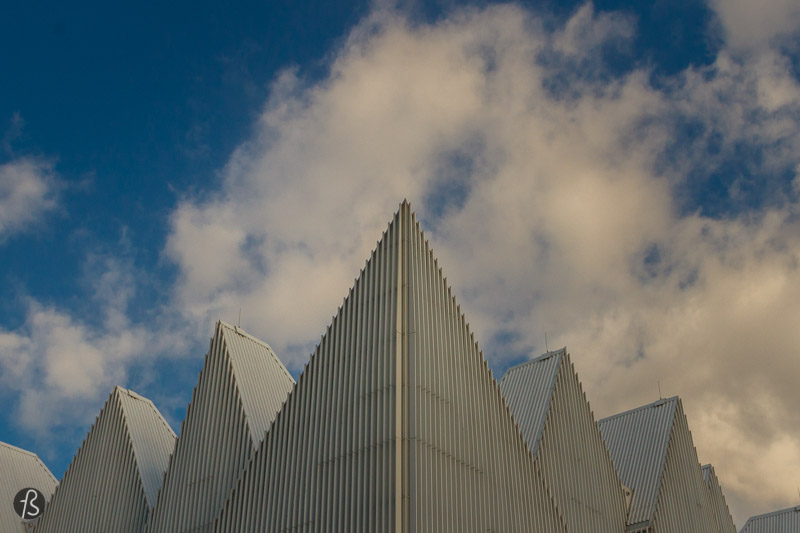
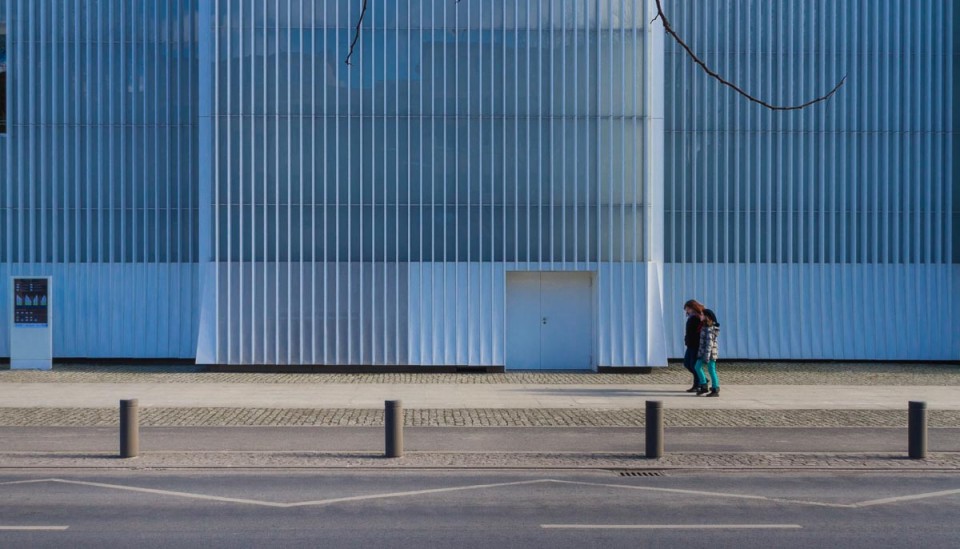
The Post Modern buildings at Noisy-le-Grand
When I was planning my trip to Paris at the end of 2017, I was looking for different places to visit. My goal was to see something unusual, but I didn’t know what I was looking for until I stumble upon something I read back in 2015. This is how Les Espaces d’Abraxas in Noisy-le-Grand came to me.
Les Espaces d’Abraxas was designed by Spanish architect Ricardo Bofill back in the 1970s, and it looks more like a monument than a building where people live. But this is a 591-unit building complex made up of three different main parts. The Palacio is the tallest building and, with its 19 stores, it looks like something out of a video game with all its angles and straight lines. There are even places that looked pixelated to me, like a real-life game of Tetris. There is the Théatre with its curved section of apartments that create a plaza in the center of the complex. There is, also, an arc in the center of it all that looks like a futuristic version of the Arc de Triomphe with 20 apartments.
Close to it, there is the gorgeous looking Les Arènes de Picasso. Manolo Nunez is the architect responsible for it, and he decided to counterbalance the style in the surrounding area of Marne la Vallée with something a little bit different. With this in mind, the architect adopted an architectural language filled with volumes and details. All of it based on Parisian symbols that appeared on his research.
The circular buildings designed by Manolo Nunez are the highlight of Les Arènes de Picasso in Noisy-le-Grand. They are 17 stores high and are formed by two discs made of reinforced concrete that are more than 40 meters in diameter.
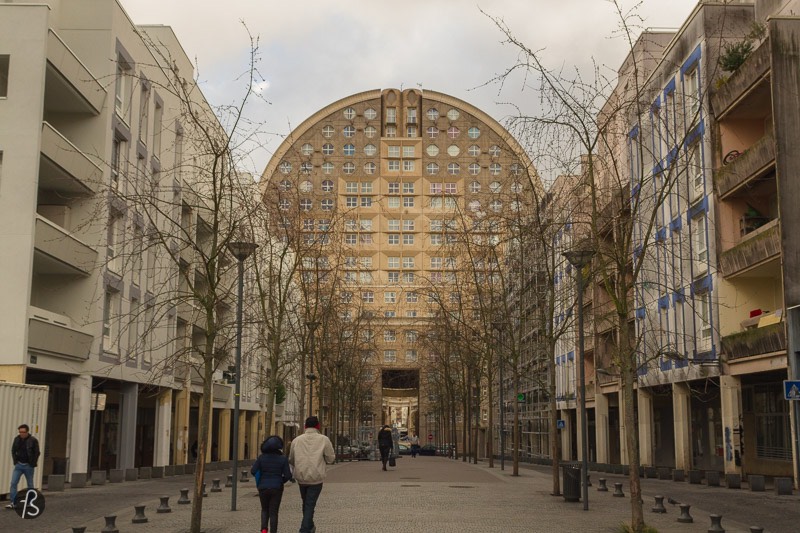
The Cube House of Rotterdam
The Cube House of Rotterdam is known, in Dutch, as Kubuswoningen and you can find them at the Oude Haven, the historical section of the city port.
This part of the city looks like a mixture of architectural styles develop at different times. Since most of the harbor area didn’t survive the bombings during the Second World War, it’s easy to understand why it looks so unique.
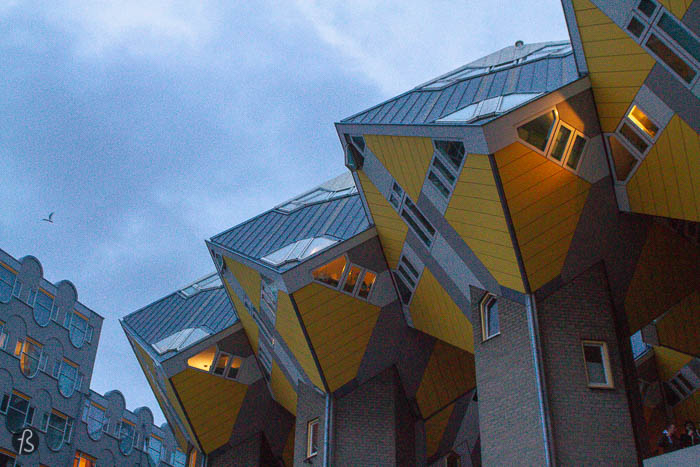
The Cube House of Rotterdam is the work of the architect Piet Blom who wanted to rethink urban development and was looking to build something that it wouldn’t look like it was designed by an architect. Based on this, the construction was split into three different projects, but the one that captures all the attention is the Cube House over one of the main roads in Rotterdam.
The House of the Soviets in Kaliningrad
The House of the Soviets is a brutalist building in the middle of Kaliningrad, a Russian exclave that might be the least touristic destination in Europe. But I was there at the end of 2017, and one of my goals in town was to take a look at this insane looking building.
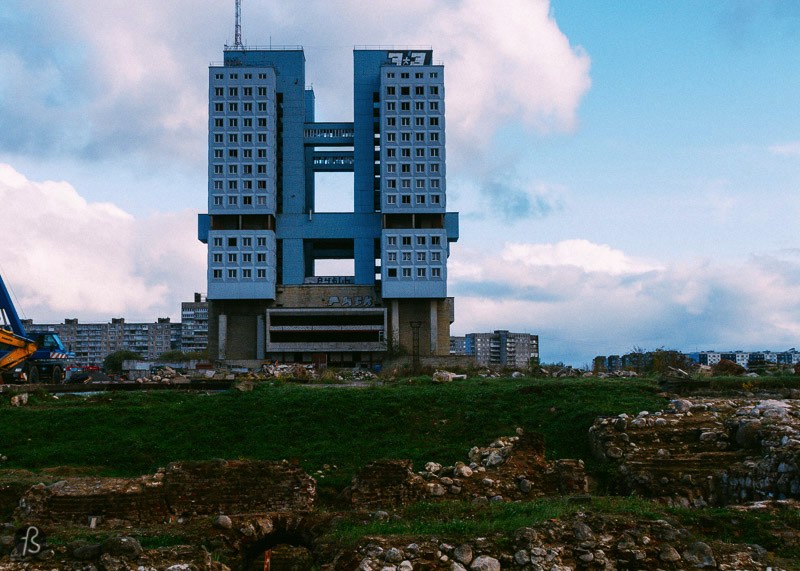
There is no other construction like the House of the Soviets in Kaliningrad. It’s so large that it can be seen from, pretty much, anywhere in the city. But most of the Russians there don’t seem to like it at all. Since it’s a failed architectural project that lays abandoned in the heart of the city, close to where the Königsberg castle used to stand. Some people complain about the aesthetic aspect of it since it looks kind of odd, like a buried giant robot.
Too bad I couldn’t take pictures from the inside. I tried, at least. I jumped the fence that surrounds the place, but some security guy came yelling in Russian in my direction, and I felt it would be safer for me to race back to where I came from. Too bad.
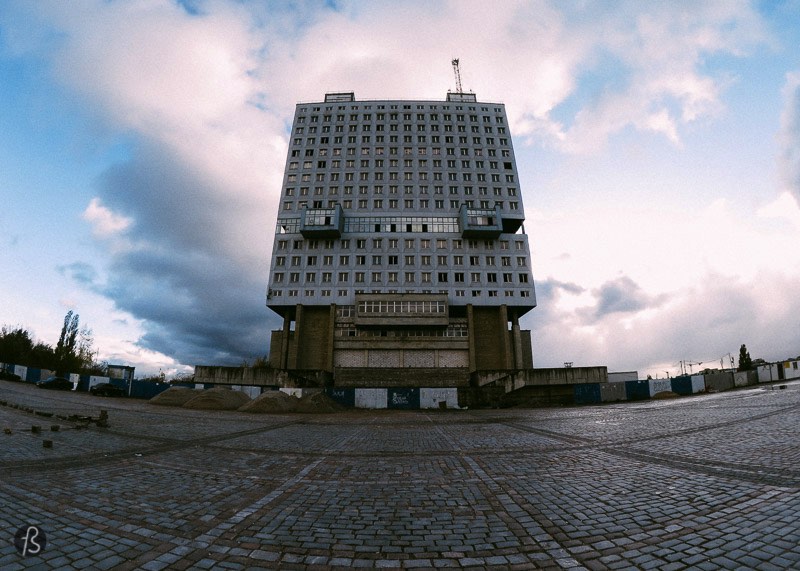
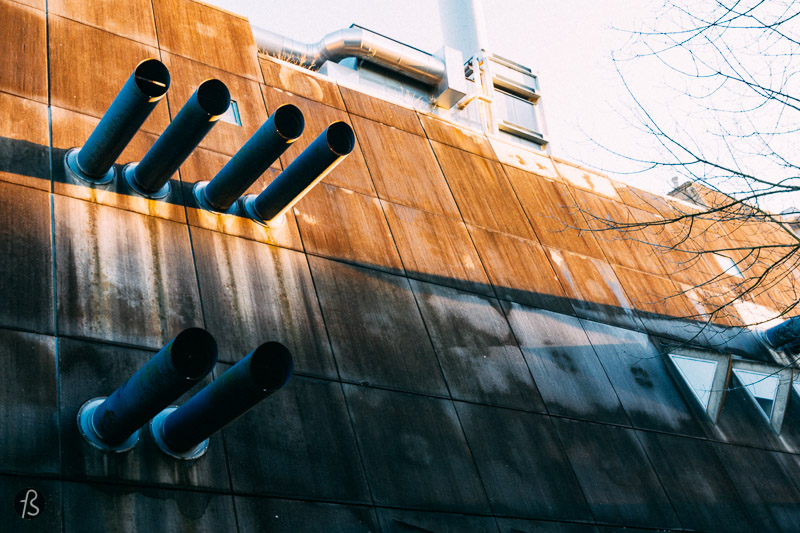
Mäusebunker or the Central Animal Laboratory of the Freie Universität
Most people that live in Berlin never go around Lichterfelde looking for Brutalist buildings. But they are missing on one of the most impressive architectural works that Berlin has to offer. The Central Animal Laboratory of the Freie Universität was designed by Gerd Hänska, a German architect whose work can be stylistically described as brutalism.
The Mäusenbunker construction took over a decade of development due to opposition from the people in the neighborhood and animal rights activists. There was, also, an issue with funding. The initial cost estimation from the project was around 4 million Deutschmarks, but it ended up costing close to 126 million by the end of construction.
All of this to have an animal laboratory that had to be closed down, years later, due to asbestos contamination. But you don’t have to worry about it if you just want to take pictures from outside. This is safe for your architectural travel thingy.
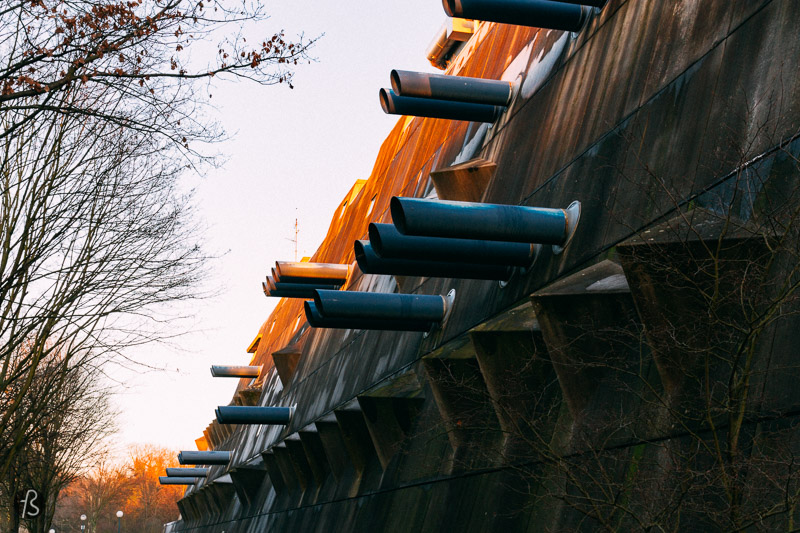
The Panathenaic Stadium is the only marble stadium in the world
The Panathenaic Stadium is one of the essential tourist destinations in Athens. Mostly because of its history with the Panathenaic Games in ancient Greece and, later, with the first modern Olympic Games, in 1896.
When it comes to architecture, this is an exciting place to visit for its uniqueness since there is no other stadium in the world that is completely made of marble as this one is. Also, it’s the perfect location to understand and observe how Greece influenced the constructions we have today.

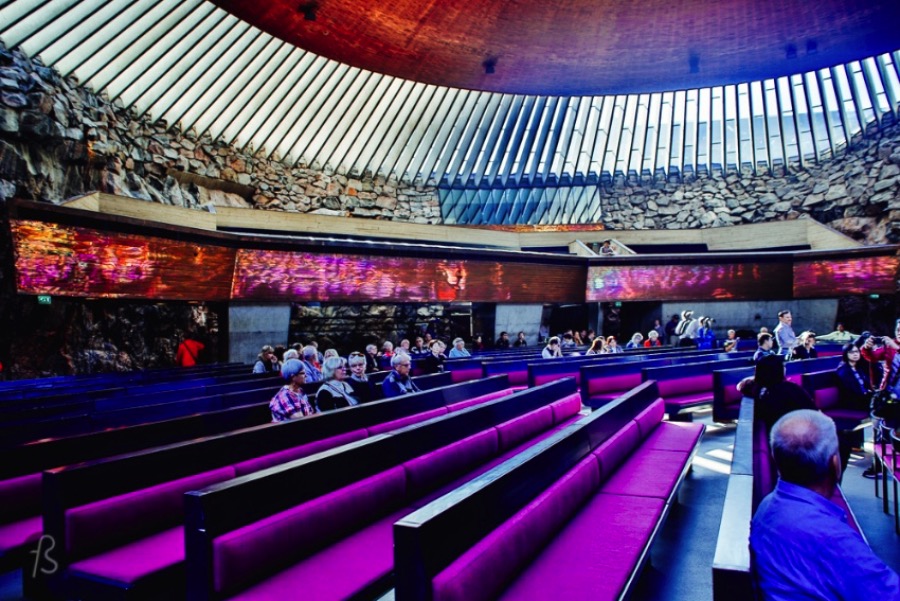
The Church in the Rock in Helsinki is perfect for Architectural Travel
This Church in Finland has a few different names. Most Finnish people call it Temppeliaukio, a name that would be translated into English as Temple Square. But most people call it Church in the Rock due to its architectural qualities. Other people call it Rock Church, but I don’t like this name that much so I will keep with another one.
The Church in the Rock was excavated straight into a block solid rock following the designs created by architect brothers Timo and Tuomo Suomalainen. Because of its unique architecture, this Church is one of the main attractions in Helsinki.
And the Church in the Rock is fantastic and pretty unique with its covered dome lined with copper and supported by the rocks. The walls are made of a solid foundation. During the morning, the sunlight spreads from the roof to the altar, and it is beautiful.

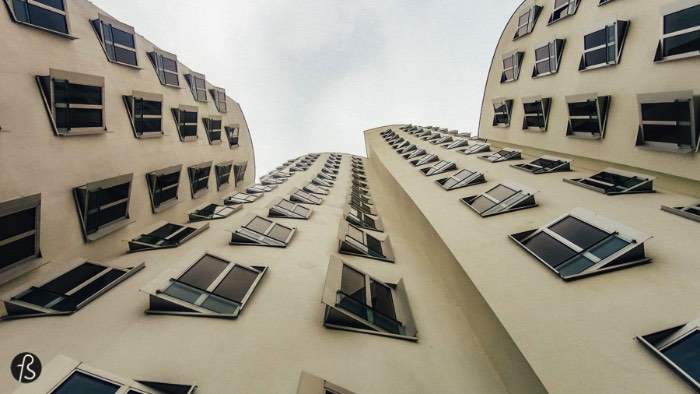
The Gehry Buildings of Dusseldorf
When it came to time to modernize its harbor, Dusseldorf decided to invite famous architects and give them the area as an empty canvas for creativity. One of the architects that were presented with this opportunity was the great Frank Gehry and what he designed for the city became Neuer Zollhof aka the Gehry Buildings and one of the main sights of this German city by the Rhine river.
The official name for the buildings is Der Neue Zollhof, but I will be calling them the Gehry Buildings since this is how I remember them.
They were completed back in 1998, and they make up a small complex of buildings. Three different buildings look similar, but that have different external materials. The tallest building has 14 stories high, and I was surprised when I read about it because the building looks like it’s less than 50 meters high!
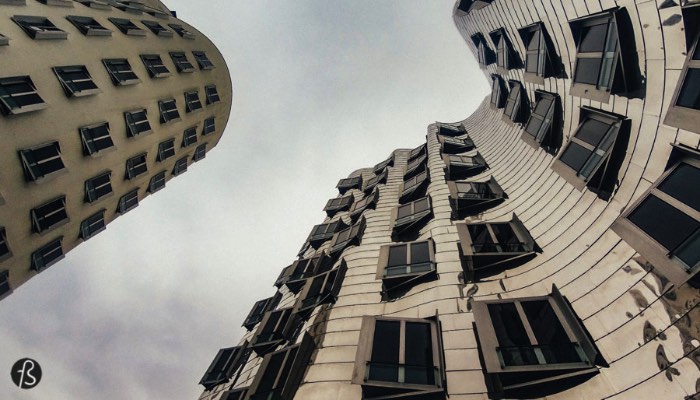

The Beautiful Bus Stops of Krumbach
Yes, you read it right. Bus Stops in an architectural travel list. Once I traveled to the Voralberg region of Austria with a few goals in mind, and one of them was to reach Krumbach and take pictures of all of the seven extraordinary Voralberg bus shelters they have there.
All of them were designed by architectural masters like Sou Fujimoto, Smiljan Radić, and Wang Shu. And they are a fantastic sight to see in the middle of the tiny roads that cross this beautiful area. But you have to read the entire article that I wrote about since there are seven of them and I think they deserve some group attention.
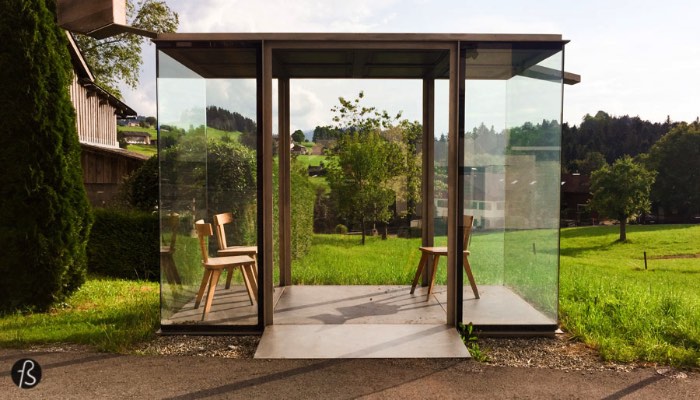
A Visit to the Magnificent Cologne Cathedral
The Cologne Cathedral, located in the heart of Germany, is a stunning example of Gothic architecture and a significant religious and cultural landmark in the country. This iconic structure took more than 600 years to complete, and it is considered one of the most impressive cathedrals in the world.
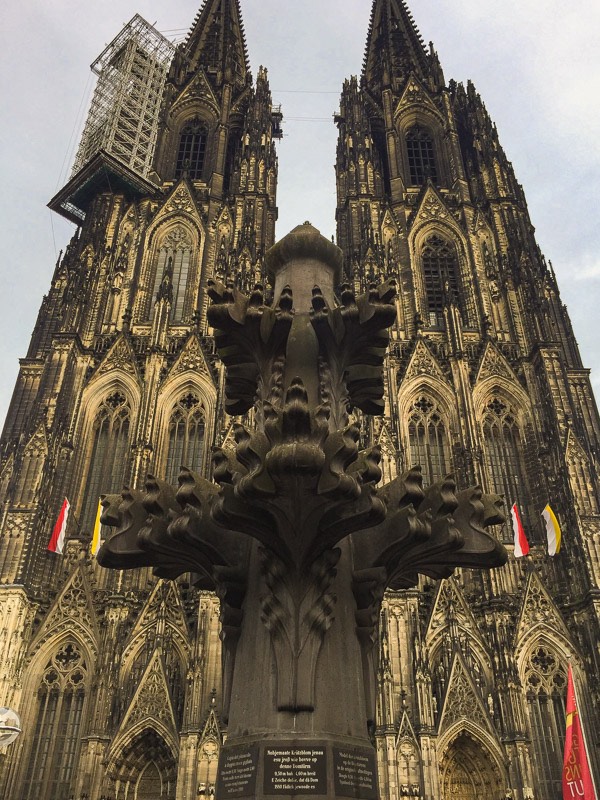
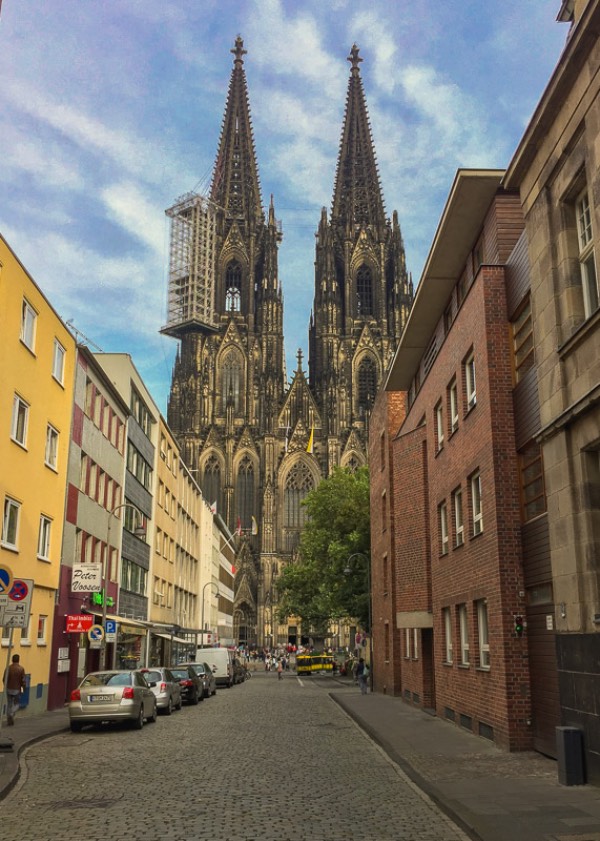
One of the most notable attractions in the Cologne Cathedral is the Shrine of the Three Kings, which is said to contain the remains of the biblical Magi. The shrine, made of gold and precious stones, is an impressive sight and has been a pilgrimage site for over 800 years.
With its rich history and magnificent architecture, the Cologne Cathedral is a must-visit destination for anyone interested in European history and religious heritage.
Architectural travel is a fascinating way to explore Europe and discover the rich cultural heritage embedded in the continent’s buildings and structures. From Gothic cathedrals to modernist masterpieces, Europe boasts some of the world’s most stunning and iconic architecture.
For me, architectural travel is not just about admiring the aesthetics of a building. It’s about understanding the historical and cultural context in which it was created and its impact on society and the people who inhabit it.
Our architectural travel guide takes you on a journey through time, exploring the evolution of European architecture from the Middle Ages to the present day. Whether you’re a seasoned traveler or a curious novice, architectural travel is an enriching and rewarding experience that will broaden your horizons and deepen your appreciation of Europe’s fascinating history and culture.
So join us on a journey through the ages as we explore the stunning architecture that defines Europe’s unique character and identity.